 The blogger showed all the beauty of the capital of Estonia.
The blogger showed all the beauty of the capital of Estonia.
Here are carefully preserved the atmosphere of the middle Ages has become part of modern life. It doesn’t play in the old days, live in it. When you need to clean the chimney, call a chimney sweep, and in the morning, see where the wind blows, look at old Thomas, adorns the town hall. This city is not to be confused with any other city. Cobblestone streets dotted with medieval churches and a magnificent merchant houses, barns and warehouses…But these medieval houses are not dead monuments to the past, they are like a fairy-tale heroes (for good reason, many of them have their own names, Three sisters, Three brothers, Father and son), suddenly made real: people live in them, be surprised by the unusual shop Windows and cafes to glow with a warm light the porches of cozy hotels.




According to one legend, Tallinn is based on the burial mound. Toompea hill is considered a headstone of Kaleva, the legendary king of the Estonians. His inconsolable widow, Linda long months dragged to the burial place of huge boulders. And up the Toompea hill. Linda, tired of such inhuman proceedings, sat down to rest… and turned to stone. Where is the stone, forgotten in time, but in 1920 in the Park outside the city walls the citizens erected a monument weeping from exhaustion Linda.



Old town (Vanalinn) — the oldest part of Tallinn, the Central part of the district centre. It is conventionally divided into two parts — the Top (Upper town, Toompea) and Lower. On the hill was originally settled nobility — the lords and nobles, and a fortress wall that separated the Upper city from the Lower, lived all the rest: merchants, artisans and other segments of the population. Toompea was divided into a Large mound, a Small settlement and the surrounding area. In the XII–XIV centuries on the hill was built by the order of the Toompea castle, surmounted by a 48-meter high tower “Long Hermann” — one of the symbols of Estonia. 3-meter national flag is raised on the tower simultaneously with the playing of the national anthem during sunrise and down during sunset. Now in the rebuilt Toompea castle is Estonia’s Parliament Riigikogu. Another glorious Toompea, the oldest Church in Tallinn — dome Church and built in 1900, the Orthodox Cathedral of Alexander Nevsky.
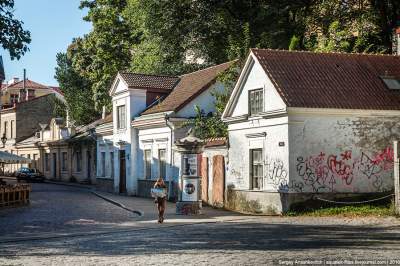
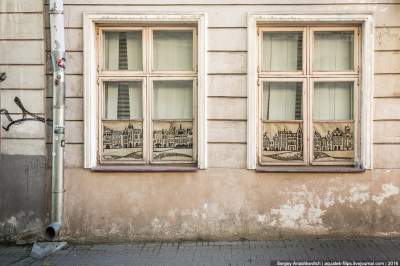

The walls of the city are known since 1248, however, the oldest preserved walls and towers belong to the XIV century Kiek in de Kök (“Look in the kitchen”) is the General name of some old German towers. They got their name from the fact that the tower literally you could see what’s cooking in the kitchens of nearby houses. The towers were severely damaged during the Livonian war, when in 1577, the troops of Ivan the terrible laid siege to Tallinn. Cannonballs of those times is still mounted in the outer wall.
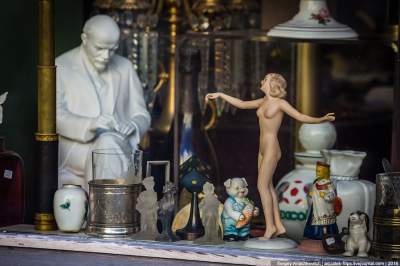


Since ancient times Tallinn was occupied an important strategic position on the trade route East — West. By the location of the future capital of Estonia took place all vessels engaged in the trade of the Baltic Ancient Russia, because the North side of the Gulf of Finland had a rocky indented coast and was dangerous for shipping. Knew that and took advantage of this Danish king, Waldemar II. It is here that he arrived with his fleet to seize a beachhead on the shores of Estonia on 15 June 1219, Defeating the Estonian army, the Danish king ordered to build a stone fortress on the site of a local hardwood.




Houses of the Old city at the present time returned to the former owners, and they are required to maintain your property in perfect condition. New buildings in old neighborhoods not built so as to not disrupt the existing appearance of the city. However, some objects on the streets of Tallinn appear. As, for example, one of the new attractions of the old town Toompea is a public toilet. Its construction cost about 200 000$, and it will pay off around 2050, they Say it is the most expensive public toilet in the whole of Estonia, and maybe in all of Europe.




The castle actually gave the city its name. It was founded by the Danish king Valdemar II after the victory in the battle of Lindanise (1219), and a few centuries became the support base for the Danes in the Baltic States. It was called simply “the Fortress of the Danes”, in the Estonian Taani linn option.
To hold cattle for medieval townspeople were natural throughout Europe — from the Baltic to the Mediterranean. Also Tallinn was no exception: so far, two streets of the Old city are called Suur – and väike-Karja. Literally — a Big and a Small Herd: it is to the gate Karya (again- the Herd) were driven to the pasture and back belonging to the citizens of goats, cows, sheep.
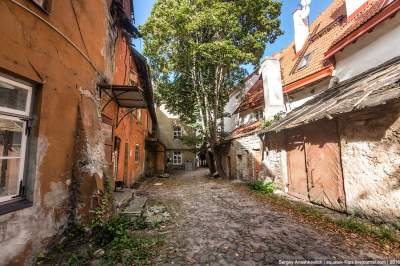

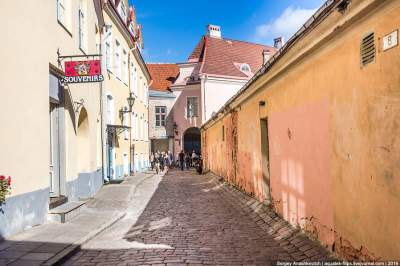
Most of the streets of the Old town date back to before the arrival of the Danish knights, and the street grid of the city is almost not changed for many centuries. Truly the Tallinn street network — like mold of past centuries.
In the middle ages, in the Lower city were not allowed to plant trees in front of burgher houses. In the narrow streets to pedestrians and carriages was crowded and no trees. The only trees growing in the Lower city on the sidewalk, two old lime trees in front of the house on the street Lai, 29. There is a legend about the privilege to plant trees, which Czar Peter gave the master of the house, mayor John hook. Usual Peter went to the mayor to partake of a beer and coffee. One day the mistress of the house, coffee was served to the king and accompanied him to the Governor-General of Estland Apraksin right on the porch. Guests sat on benches. Peter noted the owner would like to plant a couple of trees that they had sheltered from the scorching rays of the sun. Lime tree growing now, planted in the nineteenth century to replace the first Chukovskii.

Know why the intertwined streets of the Old town are narrow and crooked? They narrow because the wall, like an iron Hoop on a barrel for a long time restricted area of the city. To increase the area of construction was only possible due to the width of the street. As to the weave. In ancient times the street was created in order to bring the traveler to the desired destination as quickly as possible. This meant that the road was supposed to be the shortest. Therefore, the streets in the city are directed to each other at any angle. Why curves? It’s simple. Lay new road, on the way met a depression or elevation, had to bypass these obstacles by. So, in the end, appeared winding streets.
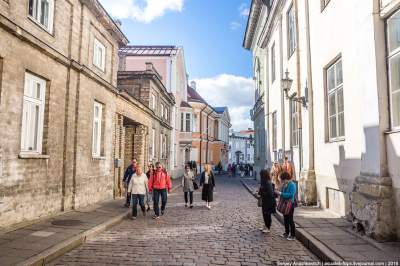
If in Vyshgorod passions for power and money, under a rock, in the Lower city and suburb, seething life of an ordinary rural settlement. Was located near an excellent harbour for anchorage of transit of merchant ships from all over the Baltic sea. The Chronicles are fragmentary data on the existence of a more ancient, than Estonian, the settlement, which was engaged only in international trade. The merchant center was located next to the harbour, located on the place where now stands the pool “Kalev”, and held, in all probability, the Northern extremity of the Old city. What life took place in this settlement, as it appeared and disappeared — very little data.
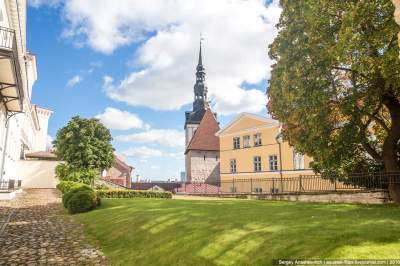
Dominating the Upper, age of Tallinn, the oldest in the city, the Cathedral — dome. Under the gravestone right at the entrance to the dome Cathedral buried Tallinn don Juan. He asked to be buried here, because I was hoping that each time she will walk a parishioner, he will have to say goodbye one sin. But there is another version: even after the death of don Juan hoped to look under women’s skirts. He owns one of the old noble coats of arms that adorn the walls of the Cathedral. Buried here the owners of the other arms is known for more worthy acts — mostly military.
Unlike many European capitals, Tallinn has managed to preserve monuments of the Hanseatic origin. Its historical part — Old town — is included in the world heritage list of UNESCO. Here you just want to wander the old streets and confused in the intricacies of the lace of the road to admire the magnificent medieval buildings.








